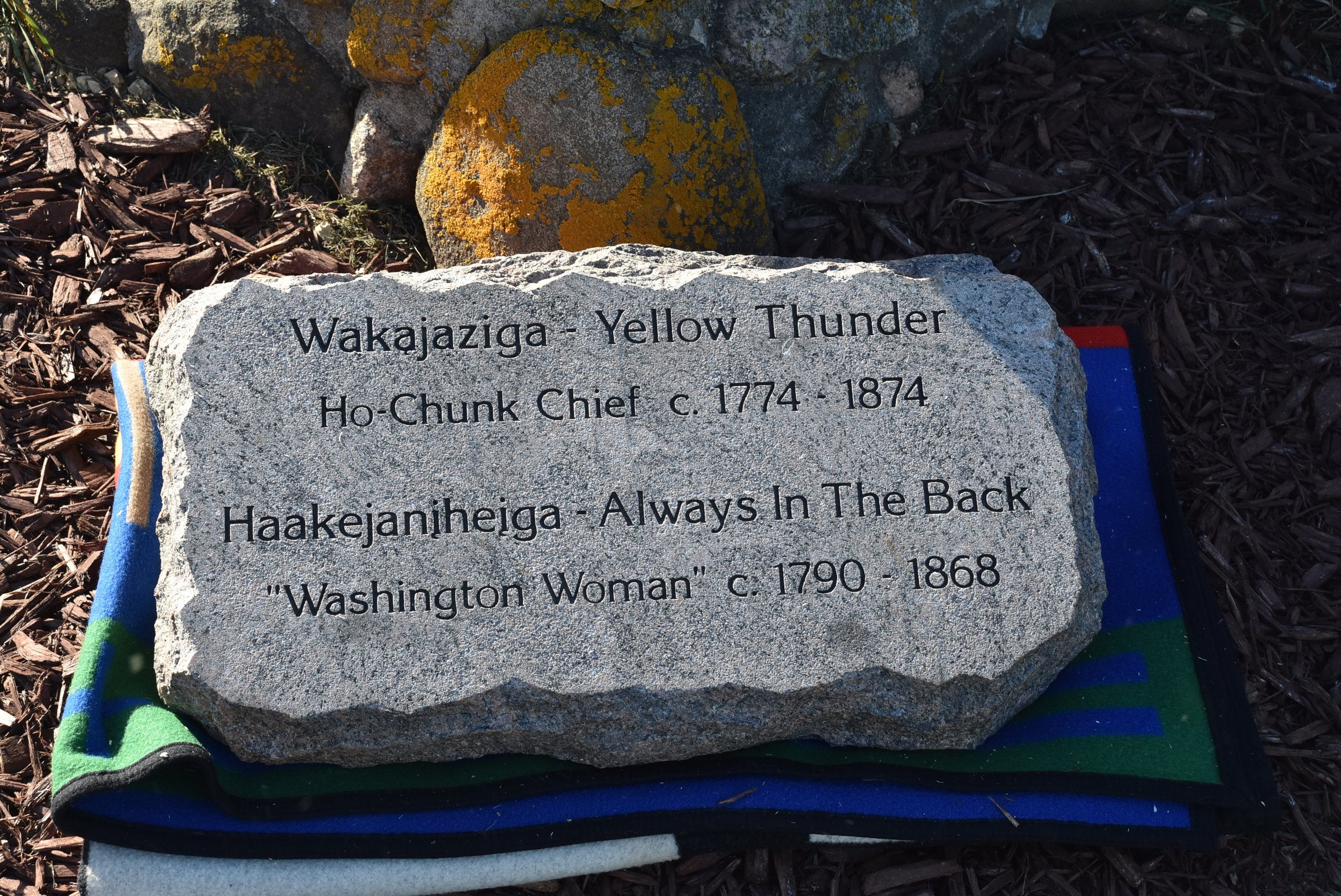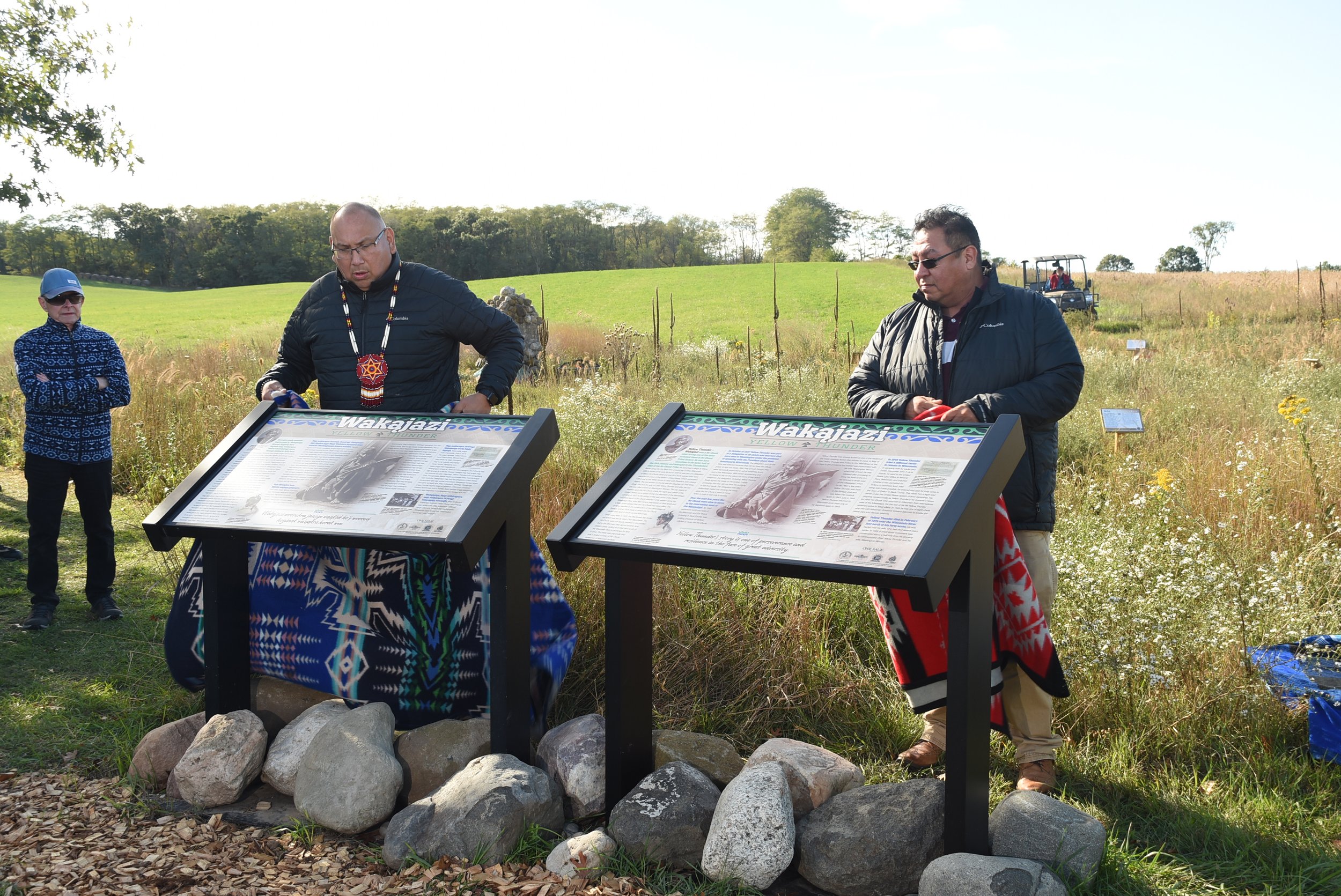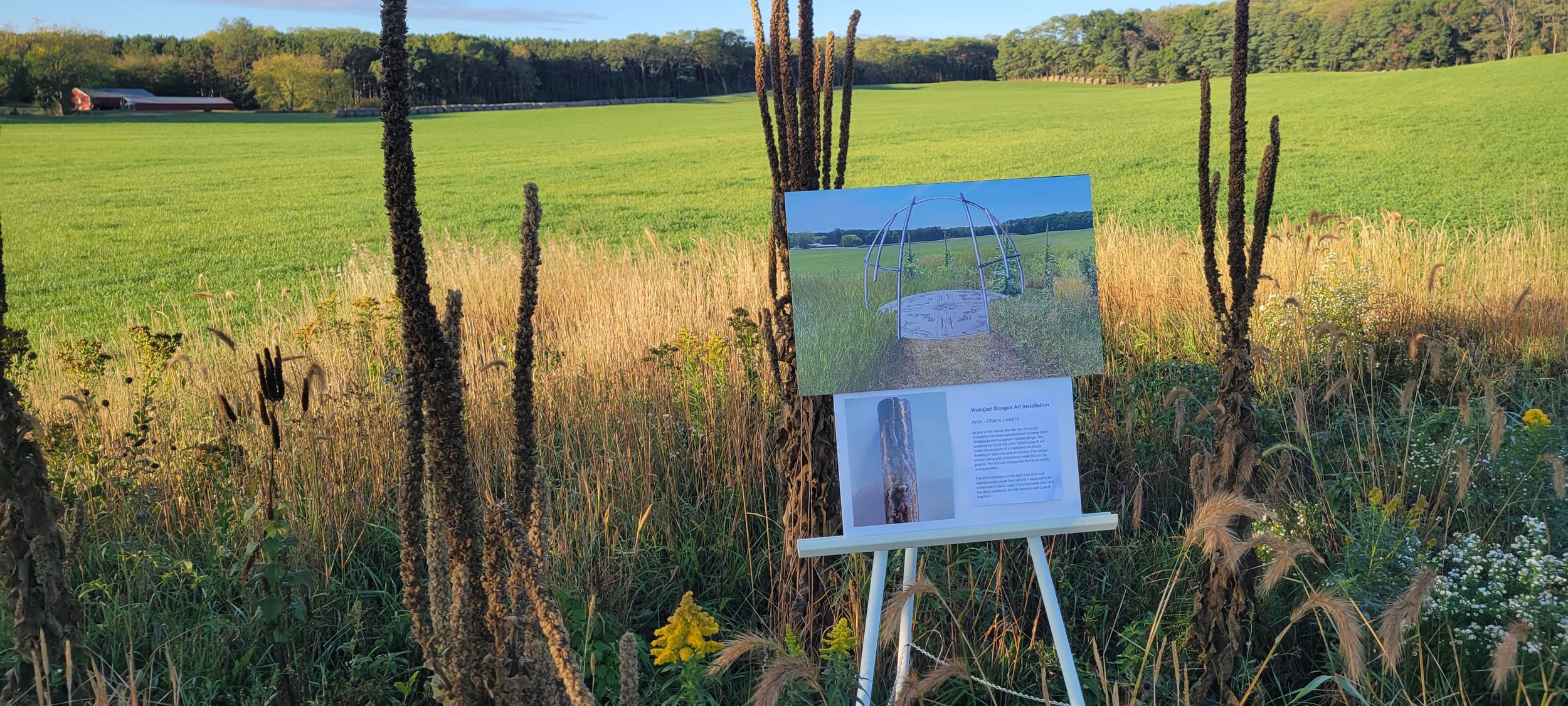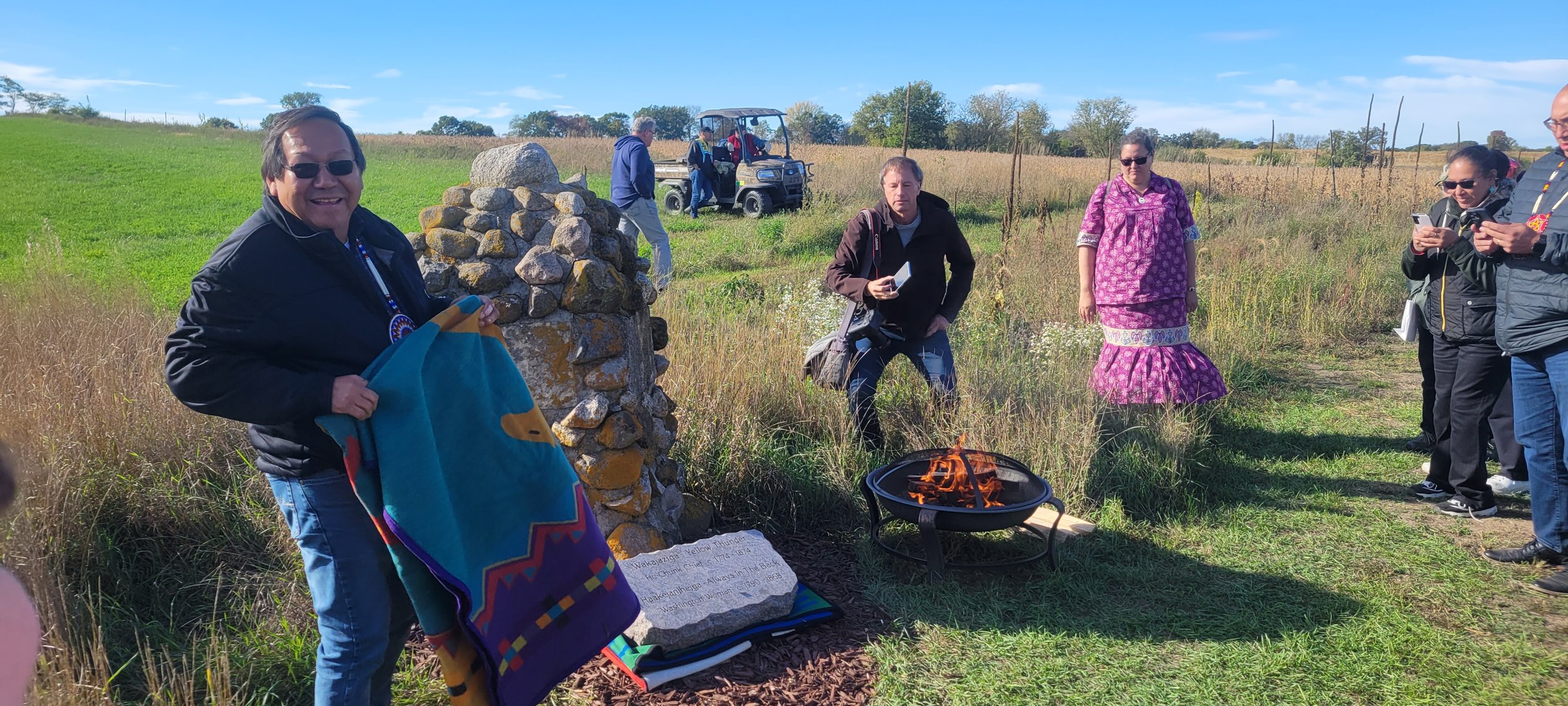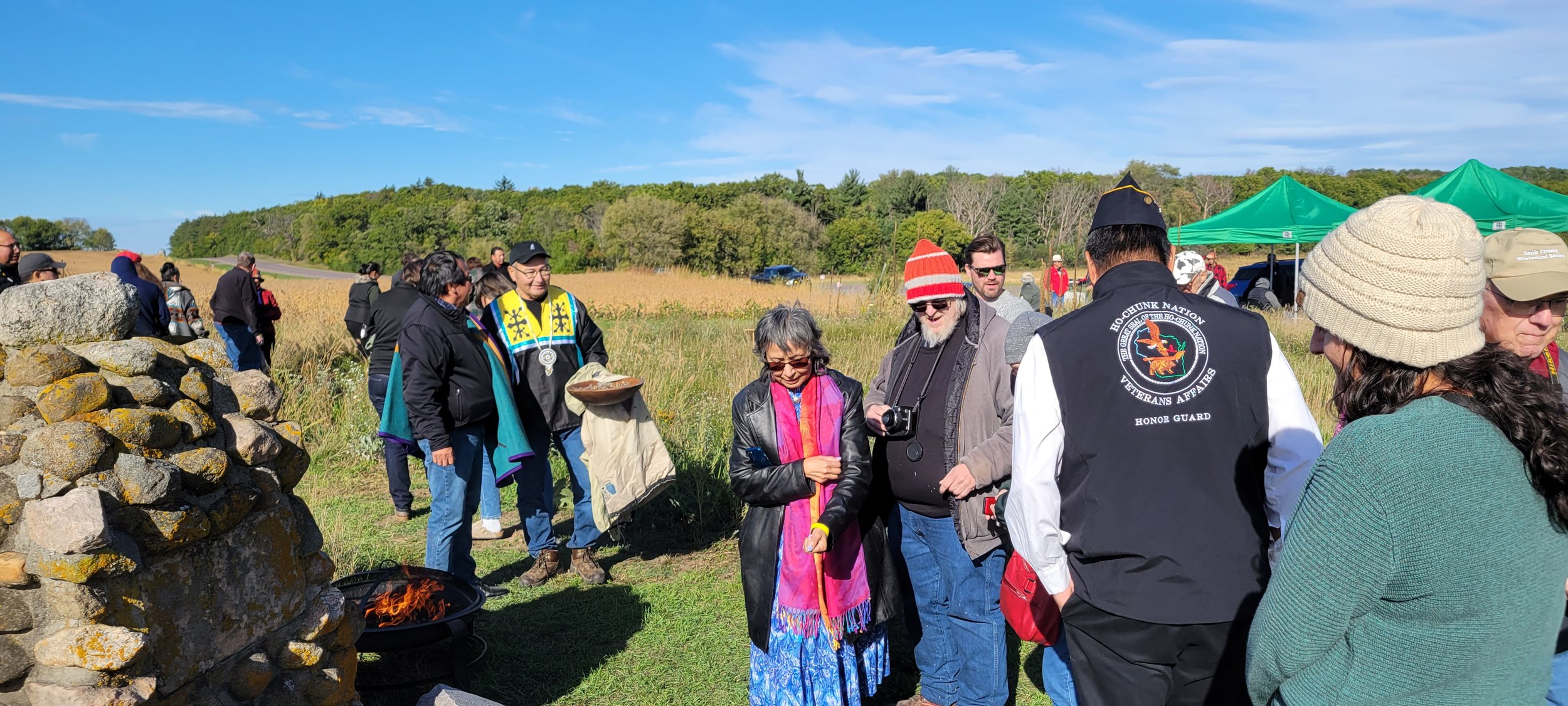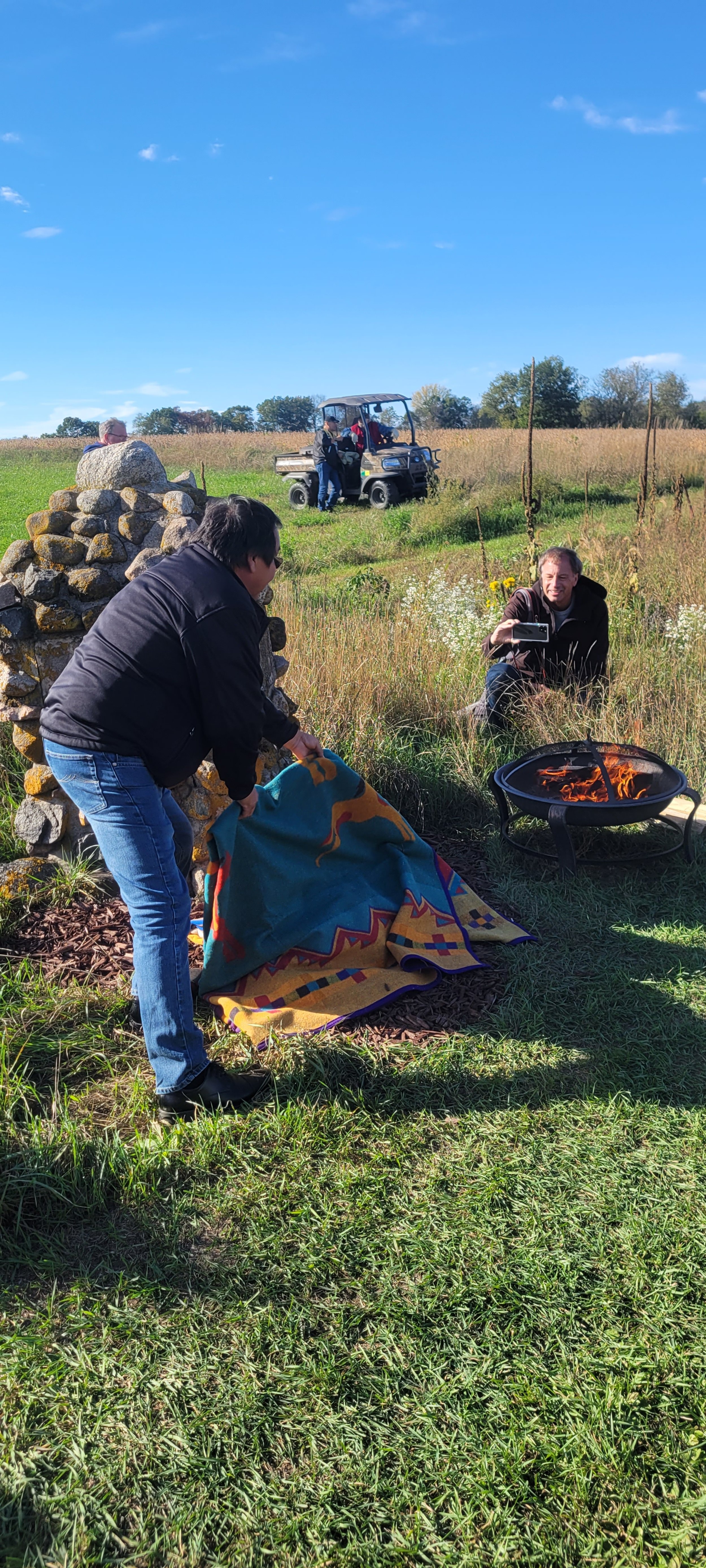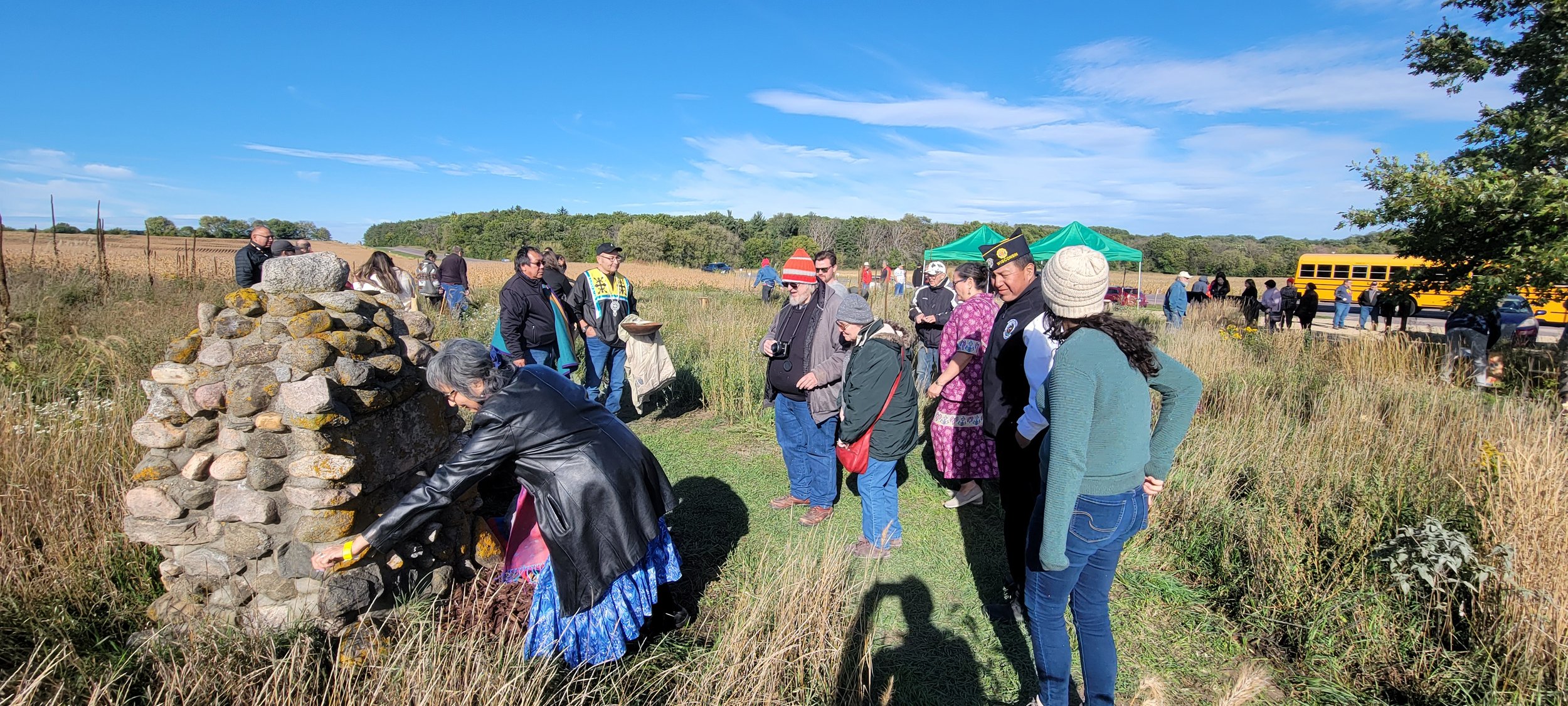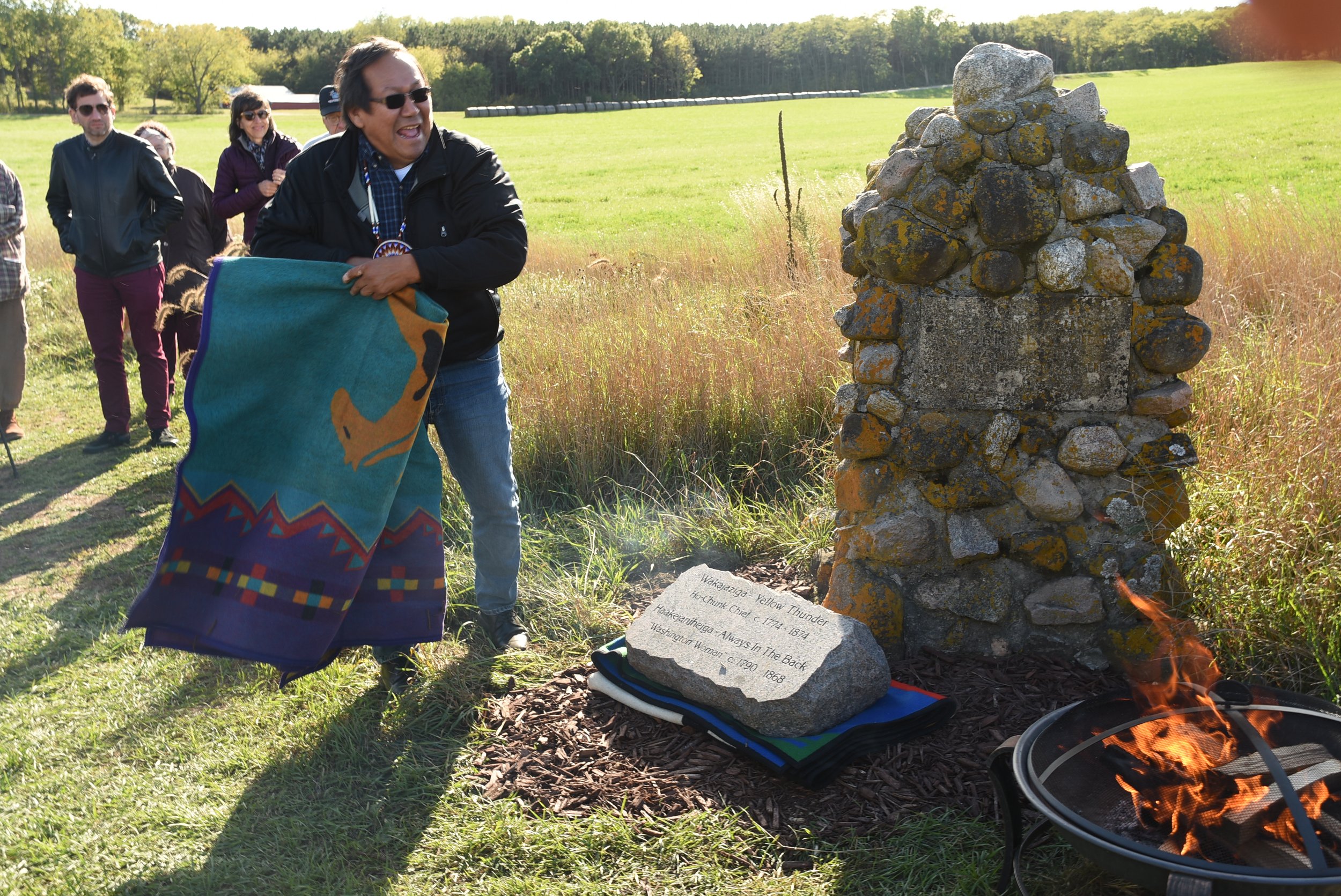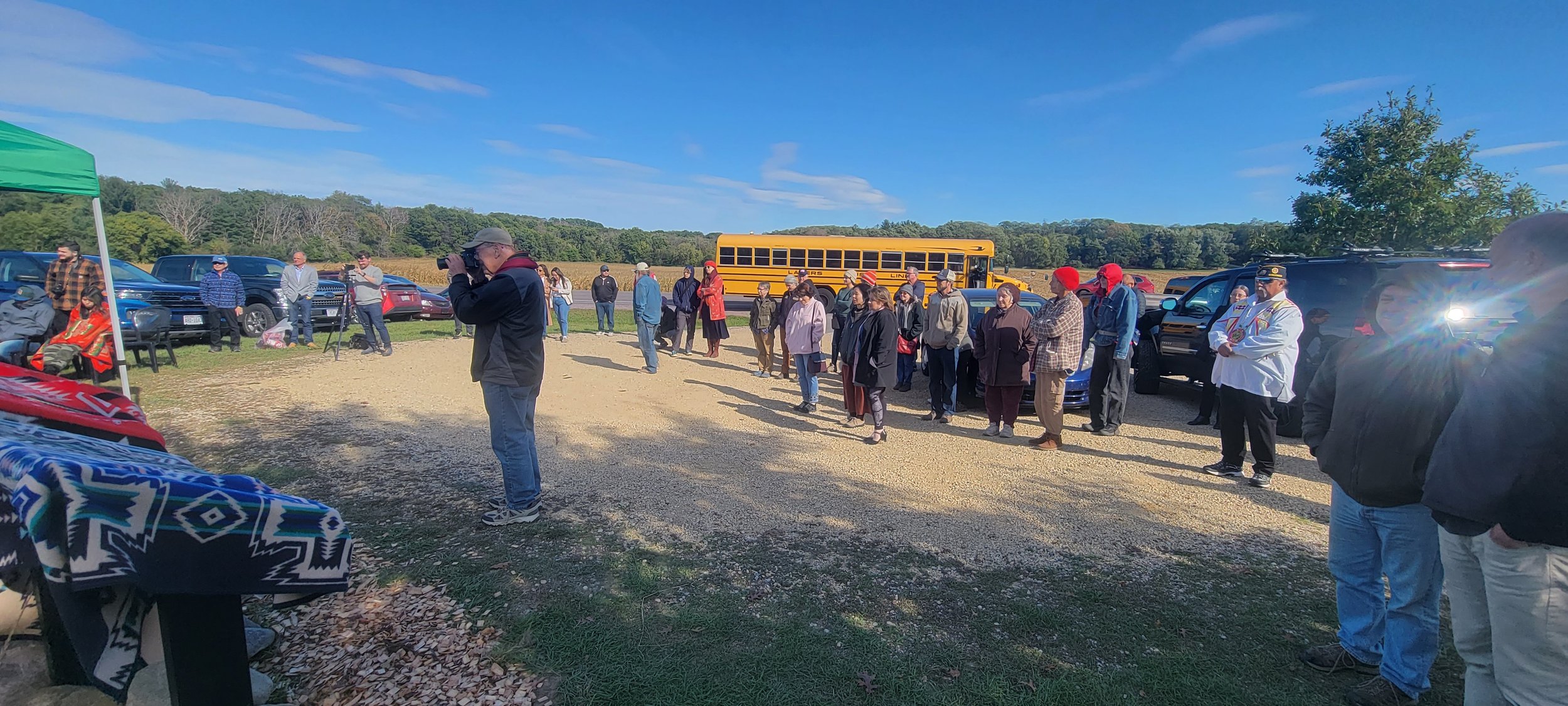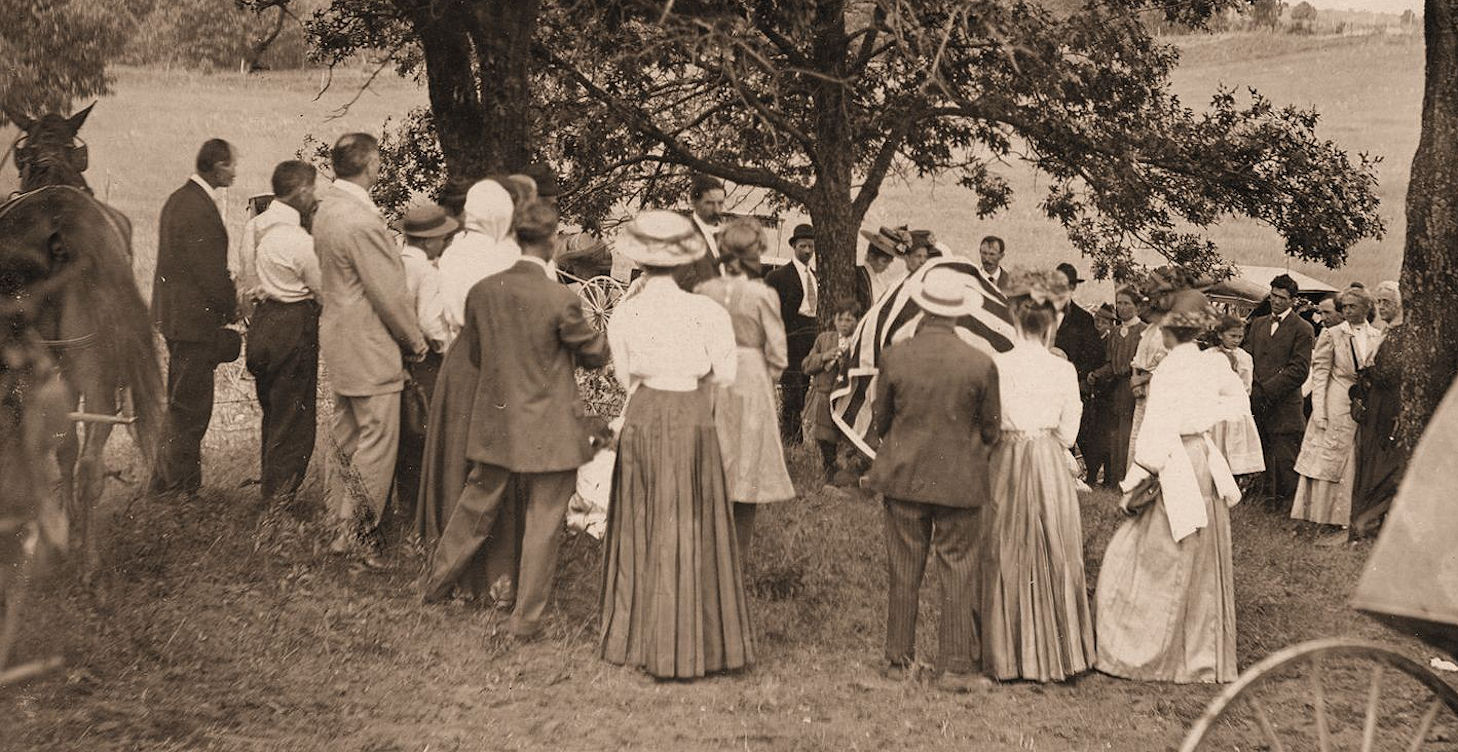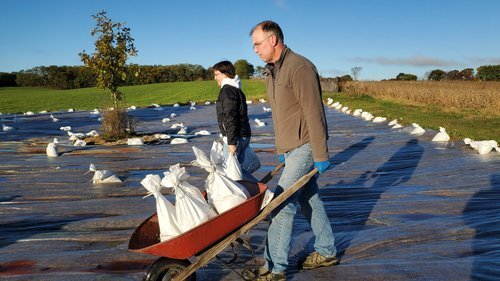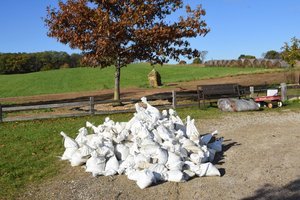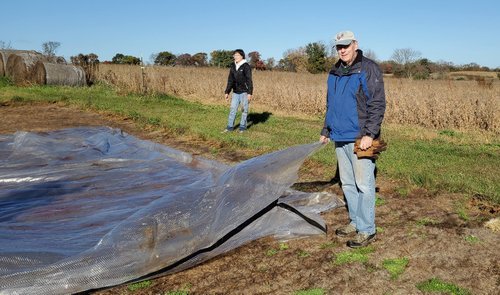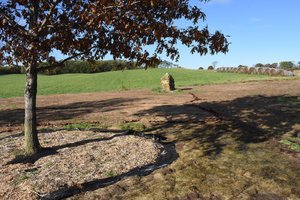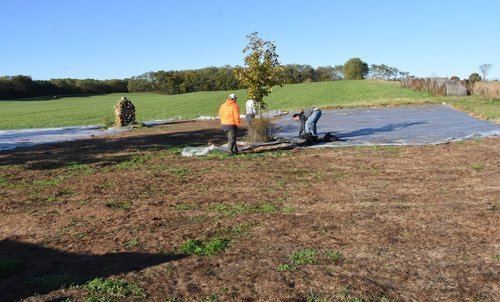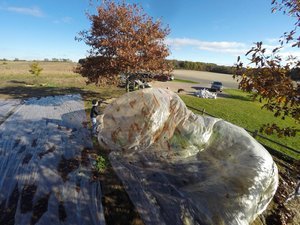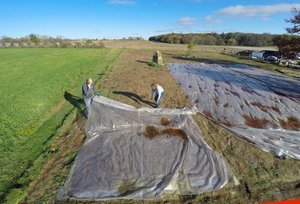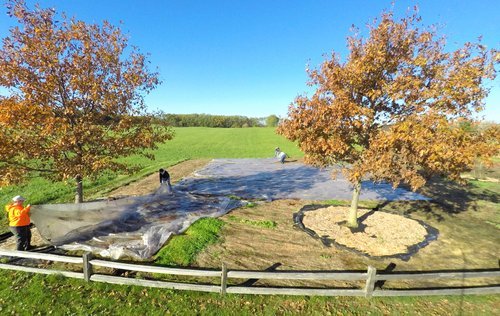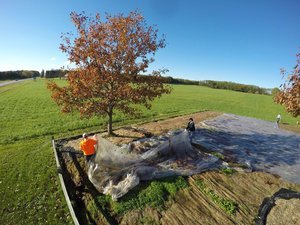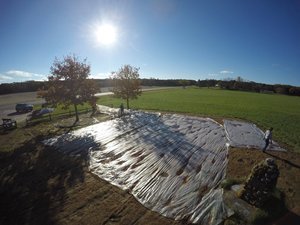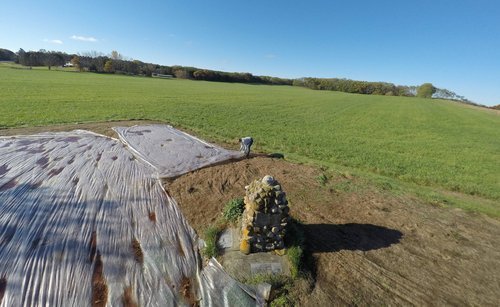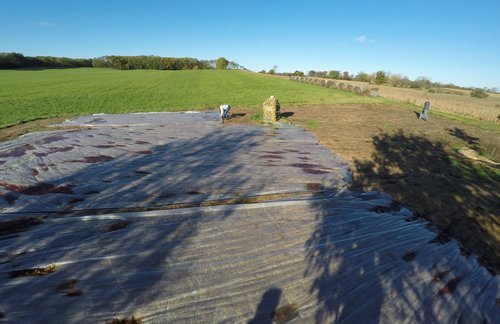Original Yellow Thunder Memorial
Yellow Thunder - Wakąjazi
Born - late 1700s
Died – February, 1874, Town of Delton, Sauk County, Wisconsin
Yellow Thunder – Wakąjazi – was a Ho-Chunk chief during one of the most turbulent times in modern Ho-Chunk tribal history. He was born sometime in the latter half of the 18th century and belonged to the Thunderbird Clan of the Ho-Chunk tribe. His band had a village at Yellow Banks along the Fox River. Little is known of his early life but in 1828 he was part of a delegation of 15 Ho-Chunk chiefs and one Ho-Chunk woman who were escorted on a tour of the eastern United States which culminated with a visit to the White House to meet with President John Quincy Adams. The trip was meant to impress upon the Ho-Chunk chiefs the might and power of the United States. The one woman who was on the trip was She Who Follows, the daughter of Chief White Crow. She was the wife of Chief Yellow Thunder and after the trip she was often known as Washington Woman. The trip came about during the aftermath of the Winnebago War or Winnebago Uprising in 1827 in which some of the Prairie LaCrosse band of Ho-Chunk Indians attacked white settlers in Prairie du Chien and along the Mississippi River. The uprising resulted in the construction of Fort Winnebago at Portage and an 1829 treaty in which the Ho-Chunk ceded their land in south central Wisconsin.
Three year later in 1832 the Black Hawk War broke out which was led by Sauk Chief Black Hawk. The Ho-Chunk were not largely involved but the in the aftermath of the conflict they signed another land cession treaty ceding all of their land south of the Wisconsin River in exchange for land in Iowa. The treaty was unpopular and only a limited number of Ho-Chunk moved out of Wisconsin territory.
In October of 1837 Yellow Thunder was part of a delegation of 20 chiefs and warriors that were sent to Washington under the pretense of speaking with the President about their homeland in Wisconsin. The delegation sent by the tribe was selected because they did not have the official power to sign any treaty. After they arrived though, they were repeatedly pressured to sell all remaining lands east of the Mississippi. With winter approaching and no means to pay for the return trip home if they didn’t cooperate, the delegation, including Yellow Thunder, finally signed the treaty on November 1 with protests that they did not have the authority to sell their lands. The delegation was also deliberately misled into thinking the treaty gave the Ho-Chunk 8 years to move when instead it read only 8 months.
1909 dedication
Over the next few years the Ho-Chunk were slow to move to the reservation west of the Mississippi. By 1840, settlement north and west of the Wisconsin and Fox Rivers including in Sauk County was putting pressure on federal officials to move the Ho-Chunk. Yellow Thunder was already known as one of the leaders of the treaty-resisting faction that refused to move. In May of 1840 Yellow Thunder was invited to Fort Winnebago at the portage to get provisions but was incarcerated along with his wife Washington Woman when they arrived. He was released after promising to bring his band to the fort for removal to lands west of the Mississippi, which he did. After a few years Yellow Thunder was back in the Portage area and was rounded up again in 1843. Late in 1846 Yellow Thunder returned to Wisconsin once more only to be rounded up again and deported in 1848.
In 1849 Yellow Thunder tried a different tactic to remain in Wisconsin. In company with fur trader and Indian interpreter John T. de la Ronde, he went to the US Land Office in Mineral Point, Wisconsin, and inquired whether it was permitted for Indians to purchase land. After being told it was possible he entered and paid for forty acres in the Town of Delton in Sauk County. This made him a legal land owner under the US system of land ownership.
Chief Yellow Thunder was a key leader of the disaffected bands of Ho-Chunk members who walked back to their ancestral homelands every time they were removed. In 1849 he purchased forty acres of land north of Baraboo which made him a legal landowner. His "40" became a haven for other Ho-Chunk people. Chief Yellow Thunder died in 1874. The monument was constructed in 1909 by the Sauk County Historical Society. His property, which became known as Yellow Thunder’s 40, became a haven for other Ho-Chunk Indians who returned to Wisconsin from reservations west of the Mississippi.
For the rest of his life Yellow Thunder remained active in tribal affairs. In 1863 he was one of eight chiefs that met with Wisconsin Governor Edward Salomon to smoke the peace pipe and discuss relations.
Yellow Thunder died in February of 1874 near the Wisconsin River just north of his forty acres and he was buried near his wife. In 1909 a small stone monument to Chief Yellow Thunder and his wife Washington Woman was constructed along highway A about half a mile from his property.
Yellow Thunder’s story is one of perseverance and resilience in the face of great adversity.
The original burial site of Yellow Thunder and his wife
Bev Vaillancourt and Jay Toth, former Archeologist for the Ho-Chunk Nation, discuss the possibility of this being the original location of Yellow Thunder's village.
Telling the Story
New Sign Installed at Memorial
A new dual-language sign was installed at the Yellow Thunder Memorial on County Road A north of Baraboo in 2018. The site is owned by the Sauk County Historical Society and maintained by the Sauk County Parks Department.
The Prairie Restored
In 2020 the Sauk County Historical Society, in a cooperative effort with Sauk County Parks and the Ho Chunk Nation, began a three-year prairie restoration project to restore at Yellow Thunder Memorial Park. A no-chemical approach was used, beginning with covering the existing grass with plastic for the 2020 summer season. A controlled burn followed, along with seeding of the area. Then came patience as the prairie plants took root. Many thanks to Sauk County and the Ho-Chunk Nation for funding the prairie restoration project and to the many volunteers who made the project a reality.



